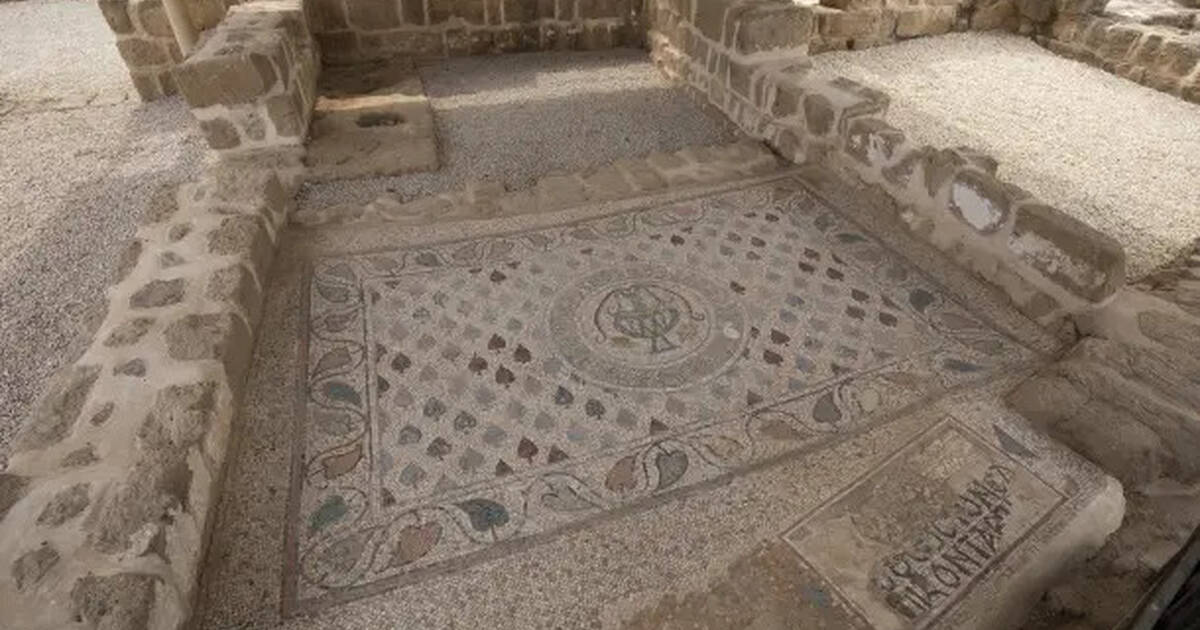The Monastery of Saint Hilarion, a historic gem dating back to the fourth century, has recently been thrust into the spotlight as it faces imminent danger due to the ongoing conflict in Gaza. This ancient monastery, located in Tell Umm Amer, Gaza, has been swiftly added to Unesco’s List of World Heritage in Danger to draw attention to the critical threats it is currently facing.
The decision to expedite the Monastery’s inscription on the World Heritage List was made during the 46th session of the Unesco World Heritage Committee in New Delhi, India. Raymond Bondin, a world heritage expert deeply involved in the nomination process, highlighted the rapid deterioration of the site’s surroundings, particularly in Nuseirat Camp, prompting the urgent need for protective measures.
Despite the widespread destruction of heritage sites in Gaza, the Monastery of Saint Hilarion has remained largely untouched, presenting a unique opportunity for heightened preservation efforts. Bondin expressed his relief and joy at the decision, emphasizing the significance of safeguarding this historical landmark amidst the tumultuous backdrop of conflict.
The monastery’s rich history as the first monastic community in the Holy Land signifies its cultural and religious importance in the region. As one of the oldest and most intricate monasteries in the Middle East, it serves as a testament to early monastic practices and traditions, laying the foundation for subsequent religious communities in the area.
While the emergency inscription of the Monastery of Saint Hilarion on the World Heritage List is a positive step forward, concerns remain about the broader protection of cultural heritage in Gaza. Mahmoud Hawari, an archaeology professor and heritage expert, lauds Unesco’s decision but underscores the need for more proactive measures to safeguard Palestinian identity and heritage in the face of ongoing conflict.
As the international community grapples with the humanitarian crisis in Gaza, the preservation of cultural heritage emerges as a vital component of sustaining the region’s identity and resilience. The Monastery of Saint Hilarion stands as a poignant symbol of the enduring legacy of Gaza’s past, underscoring the urgent need for concerted efforts to protect and conserve its historical treasures amidst the ravages of war. The Monastery of Saint Hilarion in Palestine has recently been granted enhanced protection by UNESCO, marking a significant milestone in the preservation of cultural heritage in the region. This decision comes amid ongoing conflict and destruction of historical sites, raising concerns about the impact on cultural heritage in the Gaza Strip.
UNESCO’s move to enlist the Monastery of Saint Hilarion reflects a recognition of the site’s historical and cultural significance, meeting international standards for preservation. This development is seen as a crucial step in safeguarding Palestinian heritage, which encompasses a rich tapestry of multicultural influences from Judaism, Christianity, and Islam.
The monastery, originally founded by Saint Hilarion, stands as a testament to the region’s historical importance, serving as a key crossroads connecting Egypt, Palestine, Syria, and Mesopotamia. Despite suffering damage and abandonment in the seventh century, the site was rediscovered in 1999, prompting conservation efforts to protect and restore its unique features.
Efforts led by organizations such as the Swiss-based foundation Aliph and the British Council, in collaboration with Première Urgence Internationale (PUI), have been instrumental in preserving the Monastery of Saint Hilarion. These conservation projects have focused on safeguarding the site against threats and ensuring its longevity for future generations.
By granting enhanced protection to the monastery, UNESCO aims to shield it from potential attacks, in accordance with international law that prohibits the targeting of cultural property for military purposes. This decision not only underscores the importance of preserving cultural heritage but also opens doors for increased international support to safeguard and rehabilitate the site.
With the Monastery of Saint Hilarion joining Palestine’s list of UNESCO World Heritage sites, the region now boasts five properties recognized for their cultural significance. This inclusion paves the way for enhanced technical and financial assistance, offering a lifeline for the protection and restoration of these invaluable historical treasures.
Catch up on the top stories and travel deals by subscribing to our newsletter!












Leave a Reply